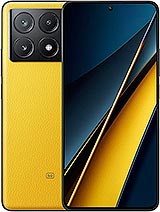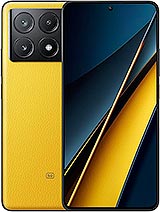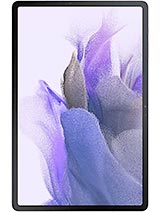
If someone tells you that memory is expensive, show them this. The Poco X6 Pro with 12GB of RAM and 512GB storage is available for £340. The phone is powered by the Dimensity 8300 and has a high quality 12-bit AMOLED panel, a 6.67” 120Hz 1,220 x 2,712px display. Additionally, there is a 64MP camera on the back (OIS) and an 8MP ultra wide (120°), plus a 5,000mAh battery with 67W wired-only charging.
The regular Poco X6 is £300 also with 12GB of RAM, though with only 256GB storage. This one has the same display and camera, the battery is basically the same (5,100mAh, 67W charging). The main difference is performance – this phone has a Snapdragon 7s Gen 2 chip with UFS 2.2 storage (vs. UFS 4.0 on the Pro). For £40 more we’d go with the Pro.
If £340 is above your budget, consider the Poco M6 Pro. £230 buys you 12GB of RAM and 512GB storage (Samsung would call this a flagship configuration) and get this – there is a microSD slot. Okay, the storage is just UFS 2.2 and the phone is 4G-only due to the aging Helio G99 Ultra chipset.
However, you get the same camera as the X6 duo (except for 4K video recording) and the same 5,000mAh battery with 67W charging. The display is a step down but still great for the segment, a 6.67” 120Hz AMOLED panel (8-bit) with FHD+ resolution. All three Pocos have IP54 dust and water resistance.
As an alternative to the Poco X6 and X6 Pro, there is the Redmi Note 13 Pro. It costs the same as the vanilla X6, though with only 8/256GB configuration (UFS 2.2). It has the same Snapdragon 7s Gen 2 chip as the X6 too and same 5,100mAh battery with 67W charging.
Where the Redmi stands out is the camera – it has a 200MP main (a fairly large 1/1.4” sensor) with great in-sensor 2x zoom and decent 4x. The main camera can record 4K and is joined by an 8MP ultra wide.
The sibling rivalry continues – the Redmi Note 13 (4G) is comparable to the M6 Pro, though with a Snapdragon 685 chipset instead and slower 33W charging for the 5,000mAh battery. The camera is once again the reason to go with the Redmi – it has a 108MP main sensor (1/1.67”). This one lacks OIS (which the Poco does have) and still can’t record 4K video.
The Samsung Galaxy Tab S7 FE is a couple of years old at this point. However, it fills a niche – at £380 it offers its own 5G connectivity (so you don’t have to rely on tethering) and has a roomy 12.4” LCD (60Hz, 2,560 x 1,600px). It supports DeX, S Pen and video out over USB-C. It has stereo AKG speakers and a microSD slot for entertainment, plus a 10,090mAh battery with 45W wired charging.
And since we’re on the topic of FE devices, the Samsung Galaxy Buds FE are down to £80. These buds have active noise cancellation, basic IPX2 water resistance and can last up to 21 hours of playtime (with the case).
We may get a commission from qualifying sales.













